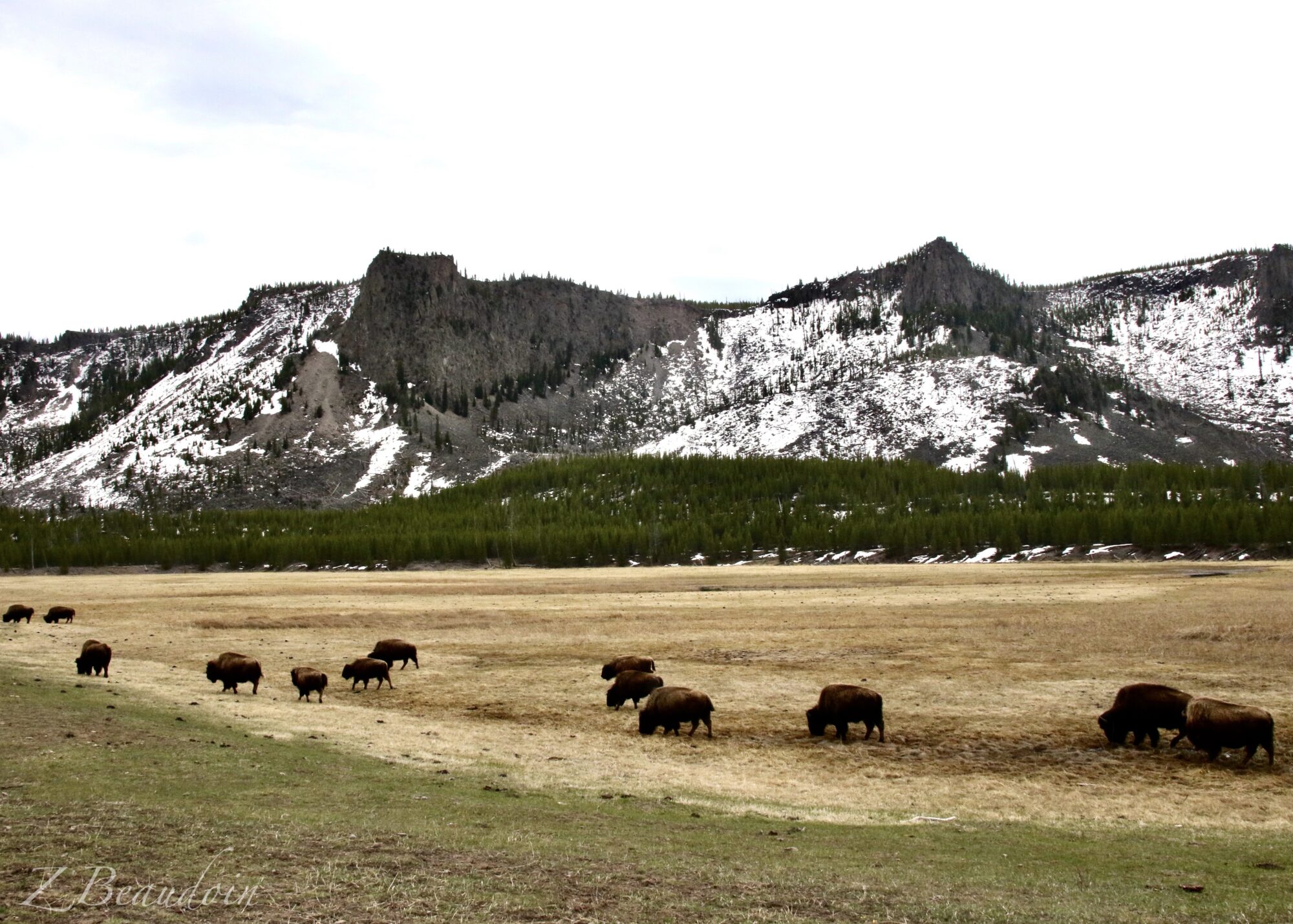As we crossed into southern Montana under a dim sky absent of the day’s final golden hues, the weariness of travel—and the toll of my chronic illness—called for a night’s rest that I knew would be insufficient. Dinner consisted of buffalo wings that, under ordinary circumstances, would offend my Buffalonian sensibilities. But on this journey, where my dietary restrictions narrowed my choices, I was just thankful for a meal to sustain me.
Awakening to the cool embrace of dawn, we heeded the advice of many: an early start is the best way to experience Yellowstone. Driving the short distance to the entrance, I reflected on how the Montana portion of Yellowstone had been a blind spot in my geographic knowledge, a surprising discovery on this journey. Bison, Old Faithful, and the ecological tales of wolves had been the extent of my familiarity with the park that I thought was primarily in Wyoming, yet now from Montana, Yellowstone laid before us, an expansive wilderness rich with promise and ripe for exploration.
As we entered the park, the landscape of mountains, water, and trees unfolded before us—a spectacle that alone would have fulfilled our quest for nature’s beauty. Allowing Yellowstone to guide us, we meandered without specific intent until we joined a congregation of onlookers by the road. The day before, a bison had fallen across the ravine, capturing the interest of a wolf family, and now it piqued the curiosity of human spectators, all of us united by the quiet hope of witnessing these elusive creatures once again.






As we mingled with the other visitors, the animated chatter of Uinta Ground Squirrels underscored our communal wait. Skeptical that the wolves would brave an appearance before such a large audience, we felt the park’s deeper mysteries calling to us. Yielding to this call, we delved further into Yellowstone’s wild heart. Our drive became a journey of discovery, marked by the grandeur of bison herds commanding the valleys and occasionally the roads, the resounding cascades of mighty waterfalls, the tranquility of mirror-like lakes, and the vivid tableau of geothermal wonders—all testament to the park’s vibrant and dynamic core.
Later in the day, our journey took us to Old Faithful, where we were mesmerized by its raw, eruptive spectacle. Yet, it was the park’s quieter marvels that truly captivated me. Mammoth Hot Springs, with its kaleidoscopic pools and sculpted limestone, alongside the vivid hues of bacterial mats in other thermal pools, whispered tales of geothermal creativity from eons past.









Yellowstone’s narrative extends beyond the geological wonders of its stones and waters. The land is imprinted with the legacy of its earliest inhabitants—obsidian artifacts and ancient tools dot the landscape, spanning back over 11,000 years, evidencing a profound bond between the native tribes and this territory. Sacred sites and natural phenomena were not merely features of the land but integral to the cultural and spiritual practices of tribes like the Crow, whose shamans found healing and guidance in the geysers’ mists.
Yet, this deep-rooted history of the park’s native peoples was systematically obscured in the aftermath of the so-called “Indian Wars,” as efforts were made to promote an image of Yellowstone as an untouched wilderness. Such narratives not only do a disservice to the complex interactions between humans and nature but also diminish the park’s true richness.
Challenging the notion of Yellowstone as a pristine, uninhabited wild reveals a tapestry rich with human history and natural engagement. This broader recognition deepens our connection to the park, inspiring a vision of interaction based on respect and active participation rather than passive admiration. The Mammoth Hot Springs terraces exemplify this shared heritage—not only as natural wonders but as cultural landmarks that recall the tribes who once lived in harmony with the land, utilizing its minerals for paint, a practice that has been largely forgotten in popular accounts of the park’s history.
Returning to where the bison lay, our journey through Yellowstone’s winding paths unwittingly mirrored the routes of native peoples before us, whose presence and stories are enduringly woven into the fabric of the land. As we approached the site, it had become a focal point of communal hope, with hundreds of visitors gathered in eager anticipation of witnessing wolves in the wild.
Tired, still processing our day, we began our journey out of Yellowstone, enveloped in the soft glow of dusk, profoundly changed. Departing with a richer understanding and appreciation for this land of geothermal wonders and rugged landscapes.
Full Gallery




























































































